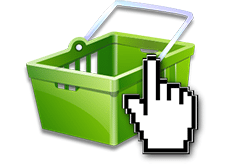Over the last few years, there has been a convergence of standard features and engaging customer components that are now expected on fashion eCommerce websites. In a series of four blog posts, I look into these features as part of the ‘customer engagement lifecycle loop’ (Reach, Find, Convert, and Retain) and provide some insight as to how they can contribute to maximising conversion to meet digital revenue targets. Part 3 of the series looks at “Convert”.
PART 3: CONVERT

Ensuring a customer places an order after spending time on your website is the main reason the site exists in the first place. This is an area that everyone has an opinion on and thus for the most part means there is no right answer – typically because it can be different depending on your brand, engagement goals, demographic and marketing. However, there are some key things that need to be apparent to at least have a chance of converting that browse to a sale.
Current Trends and Best Practice
When a customer reaches the basket page, you want them to move forward with their purchase rather than back to browsing mode. Many times a customer has a change of mind not about the style of product they have selected, but rather the size or colour they have initially chosen. Allowing the customer to make this modification on the basket page, on a per line item basis, ensures the chance of conversion goes up as the customer does not have to leave this page.
Topshop Basket
This subject is also a debate when it comes to “upsell and cross-sell” merchandising to increase the average order value (AOV). In my view, if you are trying to tempt a customer to buy more, do so without forcing them to leave the basket page. Use light-box pop-ups to ensure the choice is offered without causing confusion or indecision.
The most important thing in increasing conversion is affirming the relevancy of your recommendations. The different “product contexts” of a recommendation must be correct for your fashion customers i.e. how the recommendation is related to the product that the customer is viewing. For example, if you are suggesting something that “goes with” a product, ensure what you show is relevant rather than showing “what other people bought”. (On the other hand, if the customer is viewing a category, then maybe a “what other people bought” suggestion is more relevant to showcase what is on-trend).
In summary, try not to distract the customer from the sale; remove click banners, offers and temptations in all parts of the journey post-basket.
Emerging features and The Future
With payment tools such as PowaTag and Paddle, consumers are being given an alternative and secure way to make quick payments. While Amazon “1-Click” ordering has been around for a long time this, of course, works well when you are known to that retailer and you have already stored your details on their system. However, by using these new payment methods via your phone or tablet you can store all your purchase data, such as credit cards and addresses, in the phone itself. Then when you are at the checkout, you can simply enter a unique code or take a QR code capture on the screen to complete the order, rather than entering all the data usually required at the checkout.

